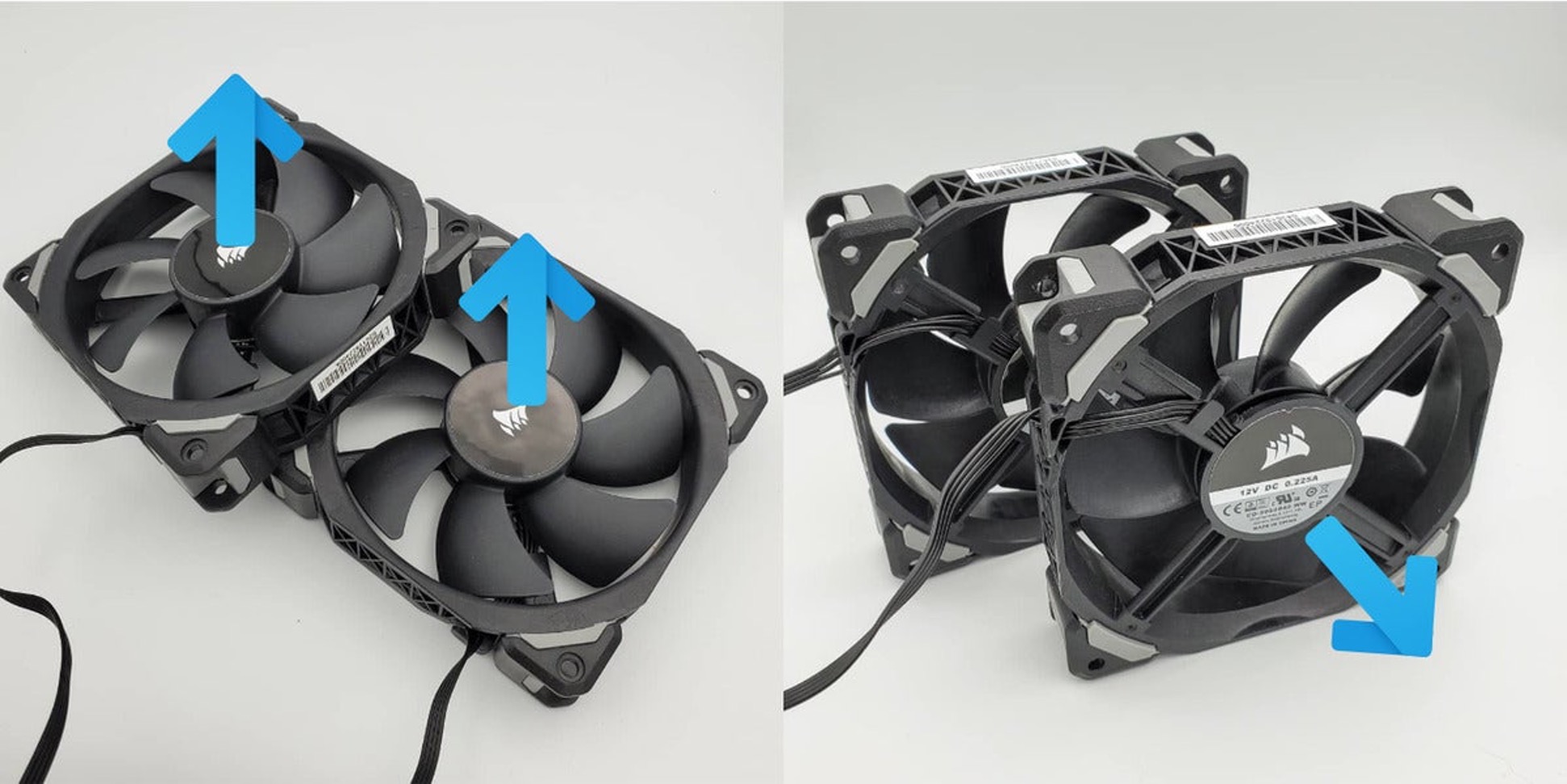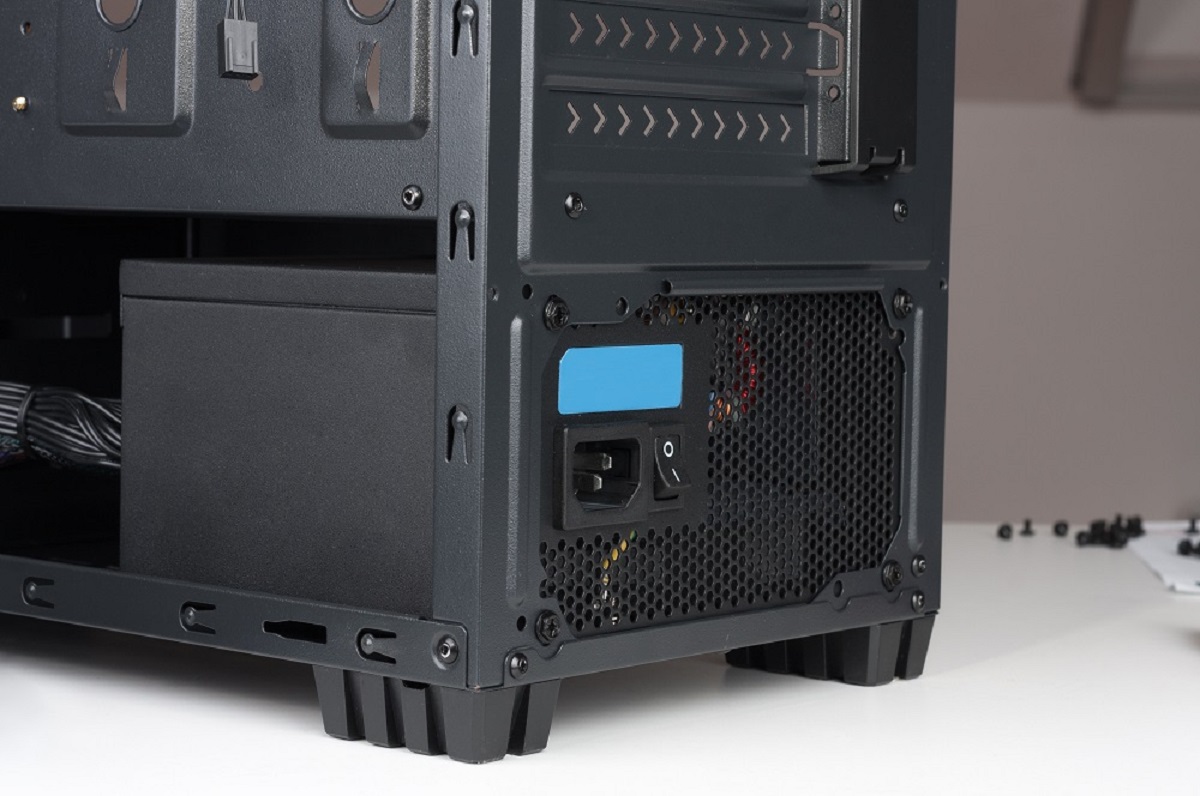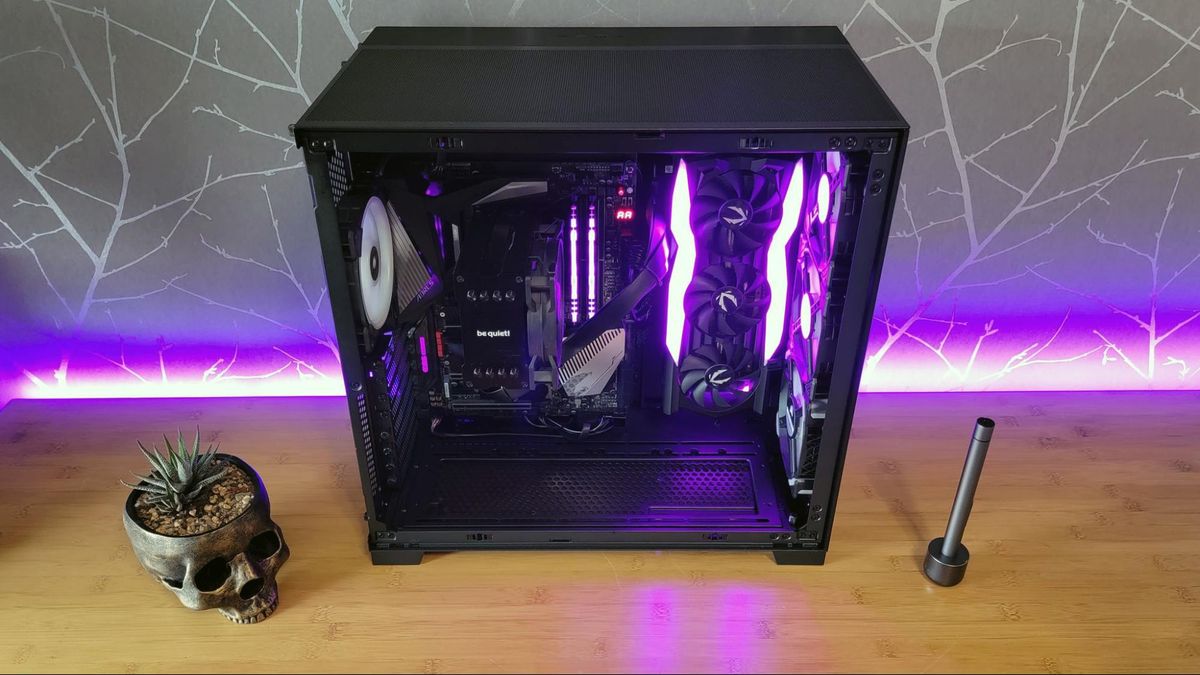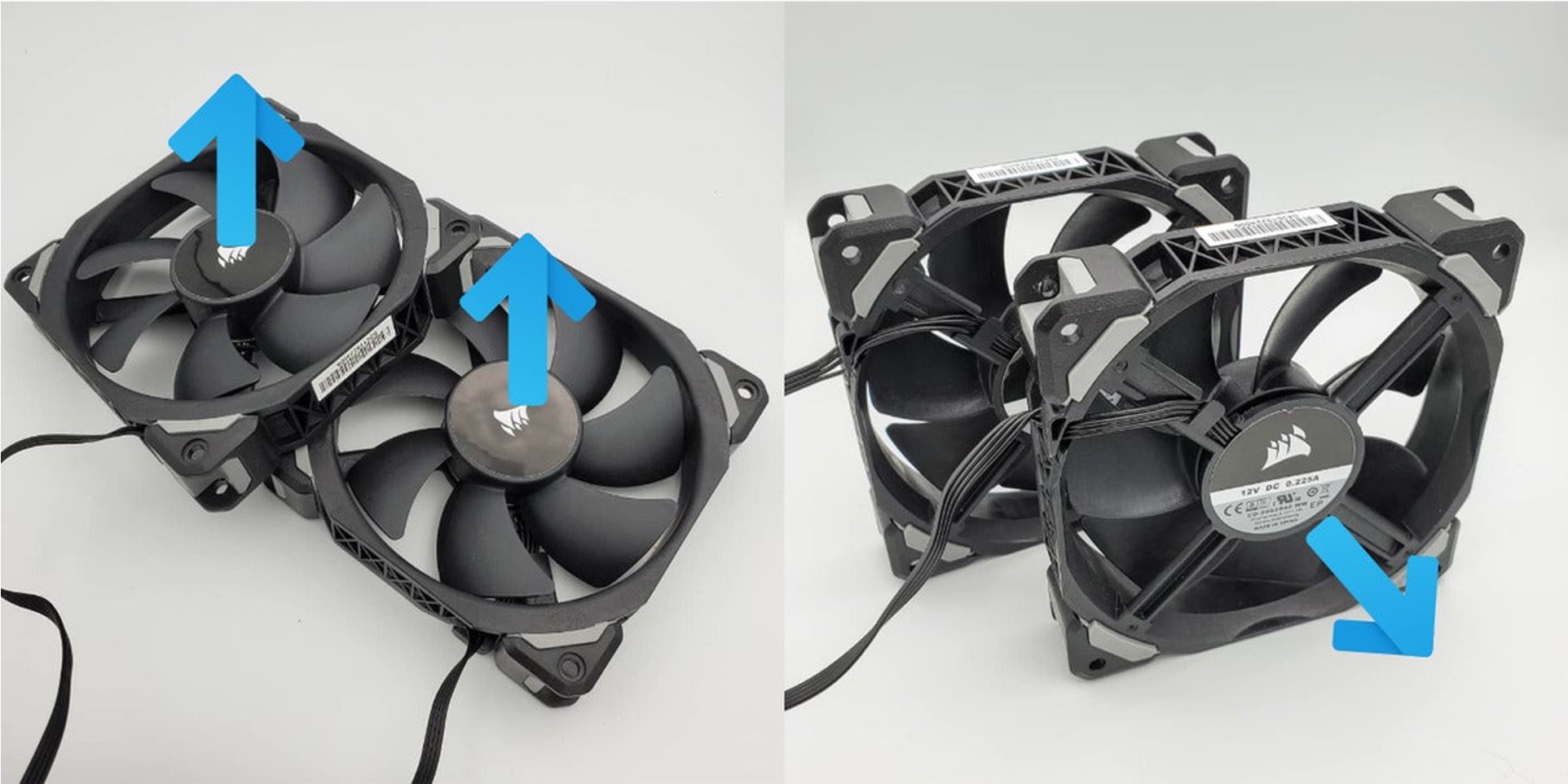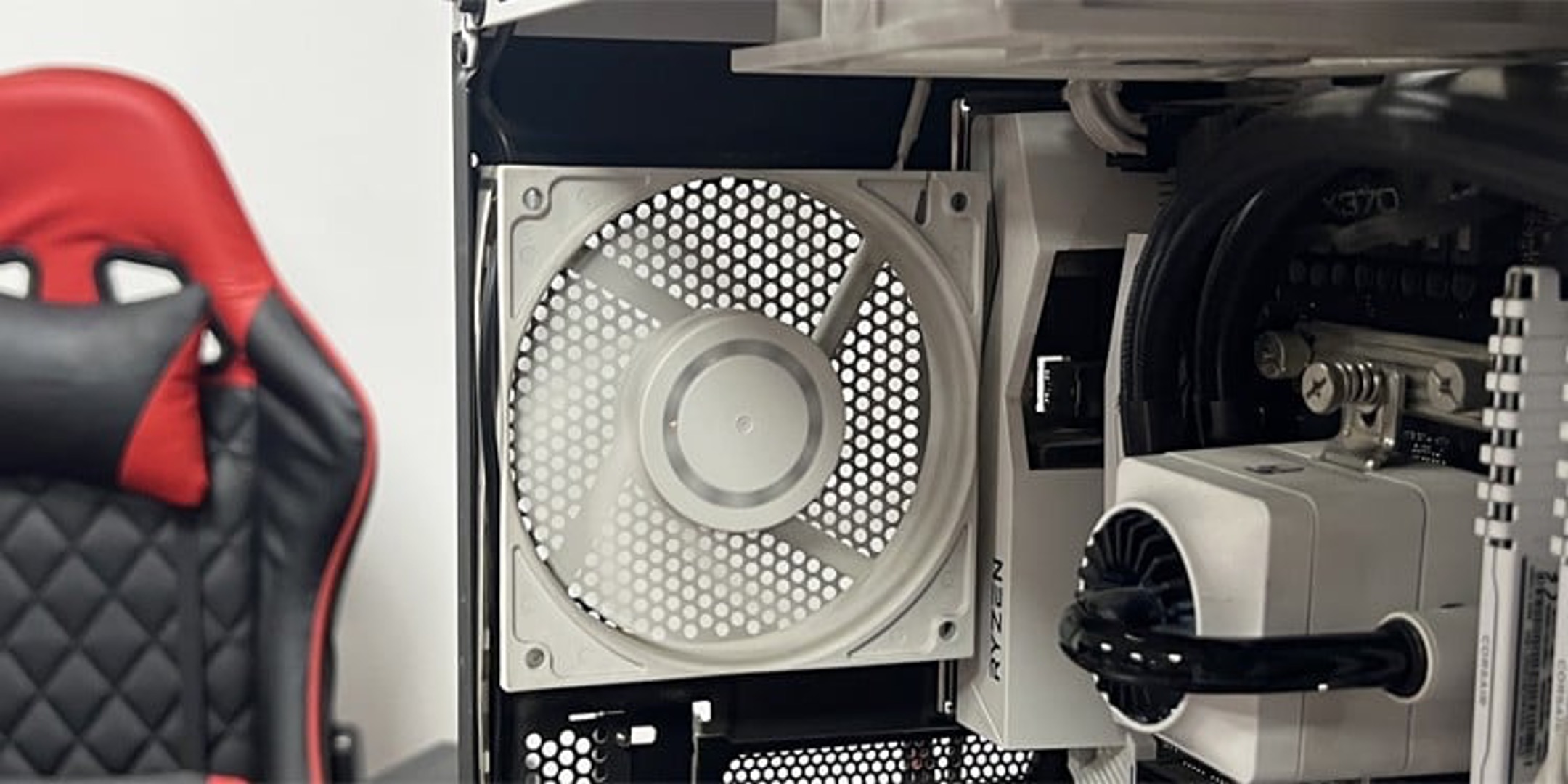Introduction
Welcome to the world of PC cooling! If you’re new to the realm of building or upgrading your own computer, you may have come across the term “case fan” quite frequently. Case fans play a vital role in maintaining the optimal temperature of your computer system by facilitating proper airflow. However, you may be wondering which way these fans should face to ensure maximum efficiency.
Understanding the correct orientation of case fans is crucial for achieving optimal cooling performance. Placing them in the wrong direction can impede airflow, leading to higher temperatures and potential damage to your components. In this guide, we will explore the factors that determine the orientation of case fans and provide insight into the different airflow directions for specific fan placements.
Before delving into the specifics, it’s important to emphasize the significance of case fans. They serve as the primary cooling mechanism for your computer, dissipating the heat generated by the internal components. Without proper cooling, your system could overheat, resulting in decreased performance, reduced lifespan of your hardware, and even complete system failure.
Now that we have established the importance of case fans in maintaining optimal temperatures, let’s discuss how to determine the correct orientation of these cooling devices.
The Importance of Case Fans
Case fans play a crucial role in maintaining the overall health and performance of your computer system. The components inside your computer generate a significant amount of heat during operation, and it is essential to dissipate this heat effectively to prevent overheating.
Without proper cooling, the excess heat can lead to a range of issues. Firstly, high temperatures can cause your CPU, GPU, and other components to throttle their performance, resulting in decreased speed and efficiency. This can be especially detrimental to gamers or those running resource-intensive applications.
Furthermore, prolonged exposure to high temperatures can significantly reduce the lifespan and reliability of your hardware. Excessive heat can cause electronic components to degrade faster, potentially leading to premature failure and expensive repairs or replacements.
Case fans work by facilitating airflow within the computer case. They draw in cool air from the outside and expel the hot air generated by the internal components. This continuous flow of air helps to maintain optimal operating temperatures and prevent hotspots within the case.
By properly cooling your components, case fans can also contribute to overall system stability. When your computer runs too hot, it can lead to system crashes, freezes, or unexpected reboots. Consistent airflow provided by case fans helps to prevent these issues, ensuring a smoother and more reliable computing experience.
It’s important to note that while many modern computer cases come with built-in case fans, they may not always be sufficient to handle the cooling demands of high-performance systems or extreme gaming sessions. Upgrading or adding additional case fans is often necessary to optimize cooling performance.
Now that we understand the significance of case fans in maintaining a well-cooled system, let’s move on to discussing how to determine the correct orientation of these essential components.
Determining Fan Orientation
When it comes to figuring out the proper orientation of case fans, there are a few factors to consider. The configuration of your computer case, the components you have installed, and the airflow requirements all play a role in determining the best placement and direction for your fans.
One important aspect to consider is the concept of positive and negative pressure. Positive pressure occurs when the intake airflow exceeds the exhaust airflow in the case, while negative pressure is when the exhaust airflow is higher than the intake airflow. Both have their advantages and drawbacks, and the decision on which one to choose depends on factors such as component airflow requirements and dust accumulation.
To determine the ideal fan orientation, start by examining your case and identifying the available fan mount locations. Typically, cases have both intake and exhaust points. Intake fans are placed to draw in cool air from the outside and direct it towards the internal components, while exhaust fans expel the hot air generated by those components.
Also, consider the positioning of your components. For example, if you have a high-end graphics card that generates a significant amount of heat, it may require additional intake fans to provide sufficient airflow and prevent overheating.
Another important factor is the direction of airflow. Most case fans are designed to move air in one direction, indicated by arrows on the fan housing. It’s crucial to align the fans in a way that ensures smooth and uninterrupted airflow. Typically, fans should be positioned to create a streamlined airflow path, from front to back or bottom to top, depending on the case design.
It’s worth noting that some cases may also support the installation of radiator fans for liquid cooling solutions. In this case, the orientation of the radiator fans depends on the specific cooling requirements of your CPU or GPU cooler. Consult the manufacturer’s instructions or reference the cooling solution’s documentation for guidance on proper fan orientation.
Ultimately, the goal is to achieve balanced airflow and maintain optimal temperatures within your computer case. Experimenting with different fan orientations, monitoring temperatures, and observing the impact on component performance can help you find the best fan configuration for your specific setup.
Now that we have discussed how to determine the proper fan orientation, let’s explore the different airflow directions for specific fan placements.
Factors Affecting Fan Placement
When it comes to fan placement within your computer case, several factors come into play. Understanding these factors will help you make informed decisions about where to position your case fans for optimal cooling performance.
1. Case Design: The design of your computer case plays a significant role in determining the number and placement of fans. Some cases come with dedicated fan mounting points on the front, back, top, and side panels, while others may have limited options. It’s important to choose a case that offers adequate airflow and fan mounting options to accommodate your cooling needs.
2. Component Layout: The placement and arrangement of your internal components, such as the CPU, GPU, and motherboard, can impact the airflow within the case. Components that generate more heat, like high-end graphics cards, may require additional fan support in proximity to effectively dissipate the heat they produce.
3. Airflow Restrictions: Obstructions and cable management can restrict smooth airflow within the case. Ensure that there is ample space around components and that cables are neatly organized to prevent blocking the airflow path. Additionally, removing excess drive cages or adjusting the position of other components can open up more space for improved airflow.
4. Fan Size and RPM: The size and speed of the fans also affect their effectiveness in cooling the system. Larger fans generally offer better airflow at lower noise levels, while higher RPM fans can move more air but may be noisier. Consider the fan specifications and balance your cooling requirements with noise levels to create an optimal cooling setup.
5. Dust Management: Dust accumulation can impede airflow and reduce the efficiency of your case fans over time. Some cases come with dust filters that help reduce the amount of dust entering the system. Regularly cleaning these filters and maintaining a dust-free environment will ensure proper airflow and optimal cooling performance.
6. Cooling Requirements: Different components have varying cooling requirements. For example, CPUs and GPUs with higher thermal output may require more focused cooling solutions, such as direct airflow from specific fan placements or the use of liquid cooling systems. Consider the demands of your components and adjust fan placement accordingly.
By taking these factors into account, you can strategically position your case fans to effectively cool your system and maintain optimal temperatures. Remember to regularly monitor component temperatures and consider making adjustments based on your specific needs and usage patterns.
Now that we understand the factors influencing fan placement, let’s dive into the different airflow directions that case fans can have.
The Different Airflow Directions
Case fans can have various airflow directions depending on their placement within the computer case. Understanding the different airflow directions will help you determine the appropriate orientation for each fan and optimize the overall cooling performance.
1. Front Intake: Front intake fans are positioned at the front of the case and draw in cool air from outside. The airflow direction for these fans is usually towards the inside of the case, directing the cool air towards the internal components, such as the CPU, GPU, and motherboard. This helps to dissipate the heat generated by these components and maintain lower temperatures.
2. Rear Exhaust: Rear exhaust fans are typically located at the back of the case, opposite the front intake fans. These fans expel the hot air accumulated inside the case and exhaust it outside. The airflow direction for rear exhaust fans is from inside the case to the outside, carrying the hot air away from the components. This helps to maintain a steady airflow and prevent heat buildup.
3. Top Exhaust: Some cases offer additional fan mounting points on the top. These top fans function as exhaust fans and work in conjunction with the front intake and rear exhaust fans. The airflow direction for top exhaust fans is usually opposite to that of front intake fans, expelling any hot air that may have risen to the top of the case.
4. Bottom Intake: In certain cases, there may be fan mounts at the bottom. These bottom intake fans draw in cool air from underneath the case, usually through dedicated vents or filtered openings. The airflow direction is from the bottom of the case towards the internal components, providing additional cooling for components such as power supplies and graphics cards.
5. Side Intake or Exhaust: Side fans are less common but can be found in some cases. They can be positioned as either intake or exhaust fans, depending on the case design and the airflow requirements. The airflow direction for side fans can be either towards the inside of the case or from the inside of the case to the outside.
It’s important to ensure that the airflow directions of the fans are coordinated to create an efficient cooling system. With a well-planned fan placement, cool air is drawn in, while hot air is ideally expelled to maintain a balanced and controlled temperature within the case.
Now that we have covered the different airflow directions, let’s discuss the optimal orientation for intake fans.
Which Way Should Intake Fans Face?
The orientation of intake fans is a crucial consideration in ensuring optimal cooling performance within your computer case. The correct direction of airflow for intake fans will determine how effectively cool air is brought in and distributed to the internal components. So, which way should intake fans face?
Generally, intake fans should face towards the hottest components in the case, such as the CPU and GPU. This ensures that cool air is directed towards these components, helping to dissipate the heat they generate. The airflow should be directed in a manner that creates a streamlined path, allowing the cool air to reach these hot spots and carry away the heat.
If your case has a front intake fan, it is typically located at the front of the case, pulling cool air from outside and directing it towards the internal components. The fan should be positioned to blow air directly onto the components that generate the most heat, such as the CPU and GPU. This helps to provide them with a fresh supply of cool air, keeping temperatures within the optimal range.
For cases with bottom intake fans, the orientation may vary depending on the design of the case and the components being cooled. In this scenario, the fans can be directed either towards the internal components or towards the ground, drawing cool air from the bottom of the case and helping to cool power supplies and graphics cards.
It’s important to note that the orientation of intake fans should complement the placement of other fans within the case. For example, if you have a rear exhaust fan, positioning the intake fan to create a smooth airflow path from front to back of the case can enhance overall cooling efficiency.
Additionally, it’s recommended to consider the CPU cooler’s orientation and the direction in which it expels hot air. Aligning the orientation of the intake fan to work in tandem with the CPU cooler can help to create an effective cooling solution.
Ultimately, the goal is to ensure a steady supply of cool air to the components that require it the most. By strategically positioning intake fans and directing airflow towards these components, you can create an optimized cooling system that maintains lower temperatures and enhances the overall performance and longevity of your computer.
Now that we have discussed the optimal orientation for intake fans, let’s move on to discussing the direction for exhaust fans.
Which Way Should Exhaust Fans Face?
The orientation of exhaust fans is as important as intake fans in optimizing the cooling performance of your computer case. Exhaust fans are responsible for expelling the hot air generated by the internal components, ensuring that it does not linger within the case and contribute to heat buildup. So, which way should exhaust fans face?
In most cases, exhaust fans should be positioned to direct the airflow out of the case. This means that the airflow direction of the exhaust fans should be from the inside of the case to the outside. By expelling the hot air, exhaust fans help to maintain a steady airflow and prevent heat buildup around the components.
The most common placement for exhaust fans is the rear of the case, where they are typically mounted near the CPU. This positioning allows the fans to effectively remove the hot air that rises from the CPU cooler. By placing the exhaust fans in close proximity to the CPU, you can efficiently remove the heat generated by this vital component.
In cases that have top-mounted exhaust fans, these fans serve to expel any hot air that may have accumulated at the top of the case. This is especially important in setups with multiple graphics cards or high-performance CPUs that generate significant heat. The top exhaust fans work in tandem with other fans to maintain a steady flow of cool air and ensure efficient heat dissipation.
Additionally, the orientation of the power supply unit (PSU) fan should also be taken into consideration. If the PSU has a fan, it typically acts as an exhaust fan, expelling the hot air generated by the PSU components. Aligning the direction of the PSU fan with the orientation of other exhaust fans can create a more effective cooling system.
It’s important to strike a balance between the number of intake and exhaust fans to maintain positive or negative pressure within the case. Positive pressure occurs when the intake airflow exceeds the exhaust airflow, while negative pressure occurs when the exhaust airflow is higher than the intake airflow. There are benefits and drawbacks to both setups, so consider the specific requirements and characteristics of your components to determine the optimal balance.
By positioning and orienting the exhaust fans properly, you can ensure that hot air is efficiently expelled from the case, preventing heat buildup and providing a cooler operating environment for your components.
Now that we have covered the orientation for exhaust fans, let’s explore the optimal direction for radiator fans in cases that use liquid cooling solutions.
Which Way Should Radiator Fans Face?
Radiator fans play a crucial role in cooling systems that utilize liquid cooling solutions. These fans are typically used in conjunction with radiators to dissipate heat from components such as the CPU or GPU. So, which way should radiator fans face to ensure optimal cooling performance?
The orientation of radiator fans depends on whether they are used as intake or exhaust fans. The direction in which the fans should face primarily depends on the specific requirements and design of the liquid cooling setup.
1. Intake Radiator Fans: In configurations where the radiator is used as an intake, the fans should face towards the inside of the case. This means that the airflow direction of the fans will be from outside the case to inside, drawing in cool air and passing it through the radiator. This setup allows the fans to cool the liquid within the radiator by extracting heat from the components and dissipating it to the surrounding air inside the case.
2. Exhaust Radiator Fans: Conversely, if the radiator is used as an exhaust, the fans should face towards the outside of the case. This means that the airflow direction will be from inside the case to outside, expelling the heated air from the radiator and carrying it away from the components. This configuration helps to remove the heat generated by the components more effectively, reducing overall temperatures.
The orientation of radiator fans not only affects the cooling performance but also impacts the overall airflow dynamics within the case. When using liquid cooling solutions, it’s important to consider the positioning of intake and exhaust fans in relation to the radiator fans. Coordinating the airflow direction of all fans in a way that creates a streamlined path can enhance overall cooling efficiency.
It’s worth noting that some liquid cooling systems include a combination of intake and exhaust radiator fans, particularly in setups that utilize multiple radiators or complex cooling loops. In these scenarios, it’s important to ensure that the airflow direction is coordinated and aligned with the overall cooling strategy of the system to achieve optimal results.
Additionally, the orientation of the radiator itself can also impact the cooling performance. It’s recommended to position the radiator in a way that allows for unobstructed airflow and easy access for maintenance. Consult the manufacturer’s instructions or documentation for specific guidelines on radiator placement and fan orientation for your liquid cooling solution.
By correctly orienting the radiator fans based on their role as intake or exhaust, you can effectively leverage liquid cooling solutions to efficiently cool your components and maintain optimal temperatures.
Now that we have covered the orientation of radiator fans, let’s discuss the role of overclocking and its influence on fan orientation.
The Role of Overclocking and Fan Orientation
Overclocking is a technique used to push the performance limits of computer components beyond their factory-set specifications. By increasing clock speeds and voltages, overclocking can provide significant performance gains. However, this increased performance often comes with increased heat generation, making proper fan orientation even more critical.
When overclocking your CPU or GPU, the components can generate higher levels of heat, which necessitates more effective cooling mechanisms. In these scenarios, ensuring proper fan orientation becomes even more crucial to maintain optimal temperatures and prevent thermal throttling or potential damage.
In general, when overclocking, it is recommended to increase the airflow within the case by adding more fans or adjusting their orientation. This helps to remove the excess heat generated by the overclocked components and maintain stable operating temperatures.
Intake fans should face towards the areas where the overclocked components generate the most heat. This helps to provide a fresh supply of cool air to these components and enhance the cooling efficiency. Additionally, adding more intake fans can help to increase the overall airflow rate, further improving heat dissipation.
Exhaust fans also play a significant role in overclocking scenarios. By directing the airflow out of the case efficiently, exhaust fans help to expel the hot air produced by the overclocked components. This prevents heat buildup within the case and maintains a consistent flow of cool air to cool the components effectively.
Additionally, when overclocking, it’s essential to ensure that the cooling system, including the fans, can handle the increased heat load. Upgrading to high-performance fans with higher RPMs and better airflow capacity may be necessary to match the cooling demands of overclocked components.
It’s crucial to monitor temperatures closely when overclocking and adjust the fan orientation and configuration as needed. Experimenting with different fan setups, such as increasing the number of intake or exhaust fans, can help to find the optimal configuration that keeps temperatures under control during overclocked operations.
It’s worth noting that overclocking puts additional stress on components and may void warranties. It is important to research and follow proper overclocking procedures and guidelines provided by the manufacturer or reputable sources to ensure safe and reliable operation.
By considering the unique cooling requirements of overclocked components and aligning fan orientation and configuration accordingly, you can maintain safe operating temperatures and achieve maximum performance gains through overclocking.
Now that we have discussed the role of overclocking in fan orientation, let’s wrap up this guide on case fan orientation.
Conclusion
Proper fan orientation is crucial for maintaining optimal cooling performance and preventing overheating in your computer system. By understanding the factors affecting fan placement, the different airflow directions, and considering specific scenarios like overclocking, you can create an efficient cooling setup that keeps temperatures in check and enhances the longevity and performance of your components.
Intake fans should face towards the hot components to provide a fresh supply of cool air, while exhaust fans should expel the hot air out of the case. The orientation of radiator fans depends on whether they are used for intake or exhaust purposes, and it’s important to coordinate their airflow direction with other fans in the system.
Factors such as case design, component layout, cooling requirements, and airflow restrictions all influence the ideal placement and orientation of fans. Finding the right balance, considering positive or negative pressure, and ensuring unobstructed airflow are key elements in achieving efficient cooling.
It’s important to regularly monitor component temperatures and make adjustments if needed to ensure that your system remains within safe operating limits. Additionally, proper dust management, fan maintenance, and cable management play significant roles in maintaining optimal airflow and cooling efficiency.
Remember, fan orientation is just one aspect of overall system cooling. It is essential to consider other cooling elements, such as CPU and GPU coolers, case airflow design, and thermal paste application, for a comprehensive cooling solution.
By taking the time to understand the principles behind case fan orientation and applying them in your system, you can create a well-cooled environment that promotes optimal performance, extends the lifespan of your components, and provides a more reliable computing experience.







